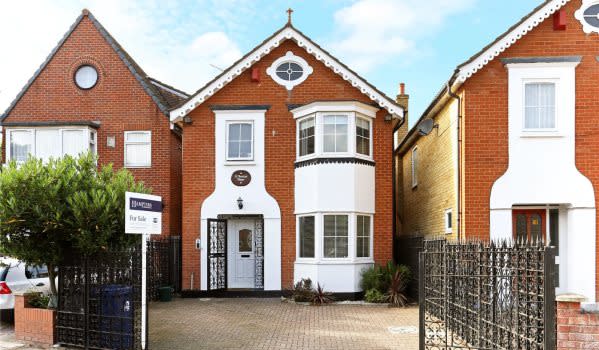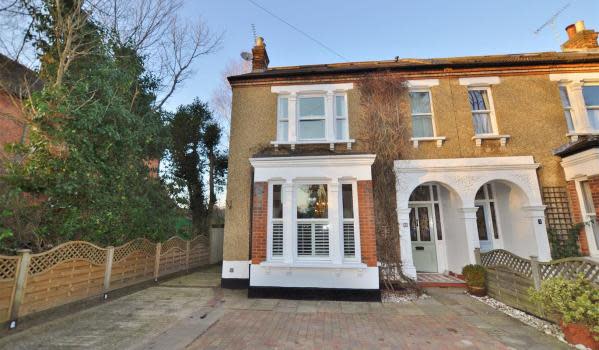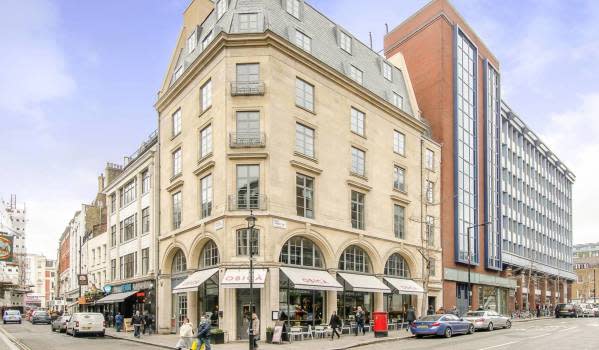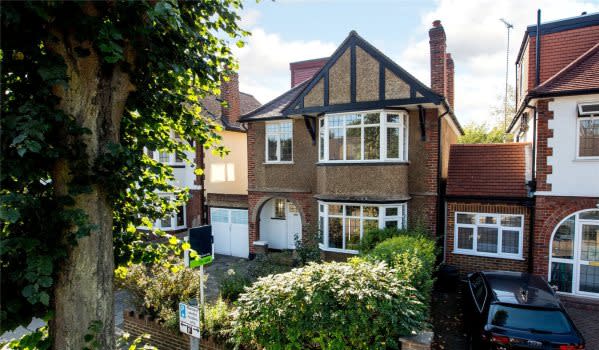Middlesex is a now-defunct county in the south east of England. London's expansion has meant that much of the area has become part of the metropolis, while the remainder has been syphoned off into other counties.
The Colne and Lee rivers once formed its boundaries. Its northern-most point was today's borough of Barnet, and it stretched down to the very edge of the City of London.
Prices in this area range widely. Exclusive areas such as Hampstead command prices of £1,542,000 on average, whereas less affluent areas such as Hounslow have a more modest average figure of £383,000. You can compare the latest prices here.
Discover more about the different areas of London by reading our guides on north, south, east and west London.
Living in Middlesex: what to expect
There are homes at both ends of the budget in this former county. Elegant Edwardian, Georgian and Victorian terraces and townhouses at the top end of the spectrum can be found in Camden Town, Hampstead and Chiswick, while more affordable options are available in the likes of Acton.
There’s no shortage of trendy shopping and entertainment in and around Middlesex. Camden Town and Hackney both host famous markets, and Soho is the capital's entertainment hub.
It also boasts plenty of green space. Royal parks and stately homes offer acres of gardens and woodland up for exploration, bolstered by local commons and recreation areas.
Transport isn't an issue either, thanks to the London Underground and Overground.

Where to start your property search
Middlesex covers a vast area, so we've broken it down into neighbourhoods.
Acton: House prices sit more towards the middle of the spectrum in Acton. It covers a large area, but the most desirable locations are North Acton and West Acton. Search Poets Corner for three- and four-bedroom terraced homes close to the station, and Mill Hill Conservation Area for Victorian cottages and Edwardian semis.
Barnet: This town has everything from modest cottages to opulent gated mansions. The Monken Hadley conservation area is particularly prized and features large Georgian properties. You can also find comfortable Victorian family homes to the north of Wood Street.
Brentford: There’s a great choice of period properties in Brentford. There are grand homes on Clifden and Somerset Roads that benefit from being near the train station. Large Victorian properties can also be found near Boston Manor Park. If you'd prefer a contemporary riverside location, look at Brentford Lock West – it has a selection of one- to three-bedroom apartments and four-bedroom townhouses overlooking the Grand Union Canal.
Camden Town: It's easy to find grand properties in Camden. Four-storey Georgian and Victorian homes are located off Camden Road and on Gloucester Crescent, some of which have now been converted into flats. If your budget is very flexible, look at the high-end properties on Regent's Park Terrace or Primrose Hill.
Chiswick: This once-small riverside village is now a desirable and affluent town with properties that can command high prices. There’s a selection of elegant red-brick properties dating from the 1800s on The Avenue and stately Georgian homes on Bedford Park. For new-build homes, check out Chiswick Gate.
Hampstead: This is one of the most exclusive addresses, home to towering Edwardian and Victorian terraces, attractive cottages and mews-style homes.
Hounslow: If your budget isn't very flexible, consider Hounslow. It's undergone a great deal of regeneration and is increasingly popular. High Street and Kingsley Road are sought-after thanks to their proximity to the station. If you want somewhere quieter, look at Bristow Road or Inwood Avenue.
Soho: Homes don’t often hit the market in this central London neighbourhood, but the ones that do can go for high prices. There are one-bedroom apartments with decent views on Ingestre Place and more exclusive flats in new developments on Sherwood Street.
Twickenham: The affluent town of Twickenham has some fine property. One of the most popular areas is St Margarets, which has plenty of Victorian and Edwardian houses. The Marble Hill Park area is also in demand thanks to its substantial Victorian semis. Look to the Whitton area for more modest 1920s and 1930s detached and semi-detached homes.

Getting around Middlesex
By rail: On the London Underground, the Northern Line runs through south and central London and forks off at Camden Town to Edgware and High Barnet. Further westwards, the Piccadilly Line serves locations such as Ealing.
The London Overground is also easily accessed. Meanwhile, many areas will benefit from the new Crossrail line, which will have stations at Acton, West Ealing and West Drayton.
By car: The M4 bisects the area, starting in Chiswick and heading westwards towards Slough and Maidenhead. To the north of Middlesex is the orbital M25 and the A1(M). The latter can be used to head north towards Hitchin.
By air: Heathrow Airport lies within Middlesex's western boundaries. Travellers have a choice of 81 airlines that fly to 194 destinations scattered across 82 countries.
London Luton Airport is also accessible. It has flights to more than 70 destinations in Europe, the Middle East and North Africa.

Things to do in Middlesex
History: You can take your pick of stately homes in Middlesex. Syon Park has been in the Duke of Northumberland's family for more than 400 years. During the summer months, you can tour its rooms, admire its large art collection, and roam the 100 acres of parkland and garden designed by Capability Brown.
Alternatively, Marble Hill, set in 66 acres of parkland, has grand interiors and a collection of early Georgian paintings. The Palladian villa was built for Henrietta Howard, who was the mistress of King George II when he was still the Prince of Wales.
Cultural: Soho in the West End is the place to go for evening entertainment. The West End itself has around 40 venues that show classic plays, comedies and musicals to packed audiences. The Prince Edward Theatre and Prince of Wales Theatre in Soho are just two of the most popular venues.
Trendy clubs and music venues can also be found in Camden. Jazz Café and The Camden Assembly are established haunts of the young and fashionable.
Outdoors: Regent's Park was designed by John Nash. It extends over 395 acres and has the largest outdoor sports arena in central London. Its area also includes Queen Mary's Rose Gardens, which feature more than 400 varieties of roses. And don’t miss London Zoo, which has 755 species of animal.
The eight acres of Myddelton House Gardens in Enfield were cultivated by Edward Augustus Bowles, a gardener, artist and botanist, and include a stone garden, rock garden and alpine meadow.
Richmond Park is the largest of London's eight royal parks. Herds of fallow and red deer roam the park, which can be explored on bike, horseback or on foot.
Shopping: Middlesex incorporates some of London's most famous markets. Camden Market and its associated street culture is known for its punk/alternative heritage and it remains one of the best places to pick up vintage clothes and music.
Hackney is renowned for its markets. Explore the Broadway Market, Chatsworth Road Market or Hoxton Street Market to pick up street food and handmade products.
Golders Green is also a popular shopping destination for ethnic food and eateries. Stores include traditional grocers and butchers as well as the very popular Jewish bakeries.
Food and drink: Soho has an eclectic mix of eateries. Here you will find specialist restaurants, such as Balls & Company, which focuses on meatballs, as well as modern Asian eateries such as Bao and Kiln. Bao's menu is based on Taiwanese street food and Kiln serves barbecued food with a Thai twist.
More trendy restaurants and drinking holes can be found in Hackney. Try Rawduck and the Kenton Pub, or test the offerings of the Crate Brewery.
Exciting places to eat and drink can also be found outside the obvious areas. The George & Dragon in Acton dates back to 1759 and now has its own micro brewery. Go to the back of the pub to see the brewing equipment.

Hidden Middlesex
Middlesex is not only home to Soho's well-loved theatres – it also has a thriving fringe theatre community. Experimental theatres such as Theatro Technis and The Red Hedgehog are particular favourites.
4 reasons to live in Middlesex
Excellent transport connections
Home to some of London's best shopping and entertainment hotspots
Access to plenty of green space, including grand parks
Range of property, from historic mansion blocks to new-build apartments
You might also be interested in...
Has the historic county of Middlesex caught your eye? Share your views in the comments below…

